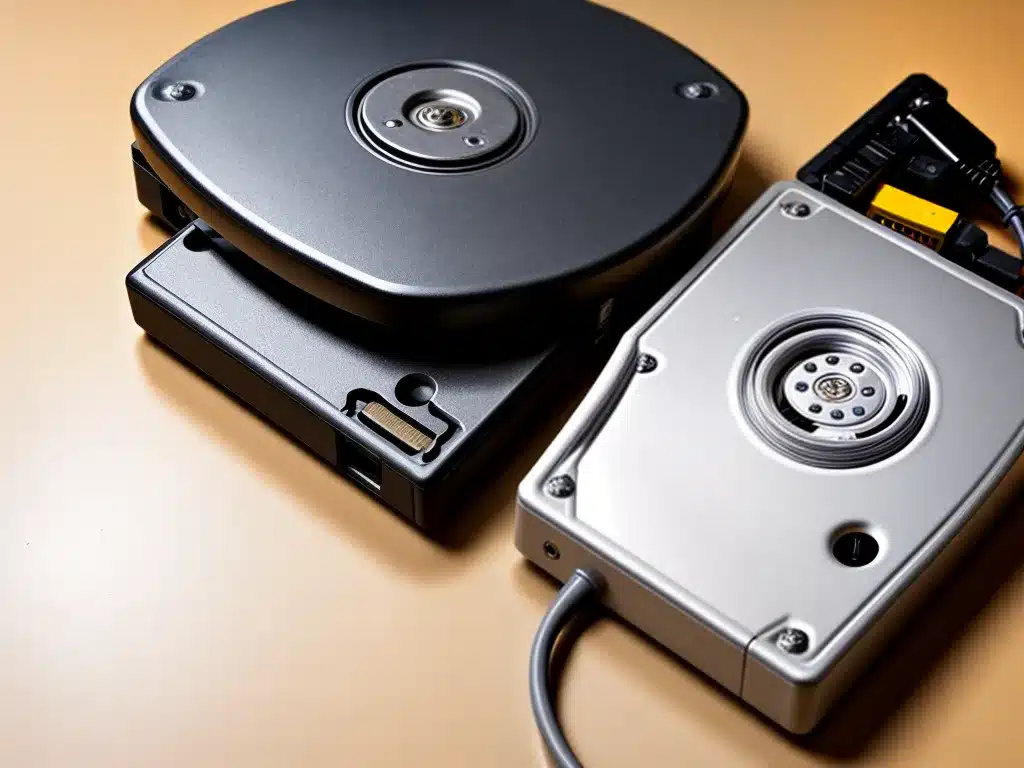External hard drives provide a great way to back up important files and data or expand your computer’s storage capacity. However, like any piece of hardware, external hard drives can unexpectedly stop working or fail. When this happens, it can be stressful trying to recover your data or get the external drive functioning again. This guide covers the key things you need to know if your external hard drive stops working in 2024.
Diagnose the Issue
The first step is to diagnose why your external hard drive has stopped working. Here are some common issues that can occur:
-
Disconnected cables – Make sure all the cables connecting your external drive to your computer are securely plugged in. Try connecting the cables to a different USB port as well.
-
Drive not detected – If your computer doesn’t detect the external drive, the issue could be with the drive itself, the USB cable, or the computer’s USB port. Try the drive on another computer.
-
Not receiving enough power – Some external drives require more power than a single USB port can provide. Use the USB cable that came with the drive and plug it into the computer’s rear USB ports.
-
Accidental disconnection – If the external drive was disconnected from the computer during a read/write operation, it may have been corrupted.
-
Mechanical failure – This occurs when part of the external drive fails, resulting in data loss or the drive not being detected.
If you’re able to identify the specific problem, that will help determine the next steps.
Run Drive Diagnostic Tools
Most hard drive manufacturers provide free diagnostic software to test for and troubleshoot issues. Here are some options:
- WD Drive Utilities – For Western Digital external drives
- Seagate SeaTools – For Seagate external drives
- HGST Drive Fitness Test – For HGST external drives
- Check Disk (CHKDSK) – Built into Windows to diagnose issues
Run the applicable diagnostic tool. If it detects a mechanical failure or other serious problem, the drive may need to be replaced.
Try a Different USB Port, Cable, or Computer
As mentioned previously, the issue could be due to a faulty USB port, cable, or incompatible computer. Try switching to a different USB port, replacing the USB cable, or connecting the drive to another computer.
If the drive works fine on a different computer, the issue is with your usual computer’s USB ports. Update your computer’s USB drivers and use a USB hub if needed.
Reset the Drive
Resetting the external hard drive might help if it’s experiencing glitches or extreme slowness. Refer to the drive manufacturer’s instructions to safely reset the drive. This clears any current data and restores it to factory settings.
Update Drivers
Outdated, corrupted, or missing drivers can prevent your computer from properly detecting the external drive. Update the drivers for:
-
USB ports – Update your USB controller and USB host controller drivers.
-
External drive – Update or reinstall the drivers for your specific external drive model.
-
Disk drivers – Update your disk driver software like RAID controller drivers.
-
Chipset drivers – Update your computer’s chipset drivers.
Updating these drivers may help your computer detect your external drive again.
Use Data Recovery Software
If your external hard drive stops working and you can’t access the data, try using data recovery software. Data recovery software scans your drive and attempts to recover as much data as possible.
Some popular data recovery options include:
- Recuva – Free for home use
- Stellar Data Recovery – Paid software with free trial available
- EaseUS Data Recovery Wizard – Free version available
Be sure to recover the data from your external drive to another location, not back to the same drive.
Contact a Data Recovery Service
For difficult mechanical failures or complex issues, you may need to contact a data recovery service. Specialists have advanced tools and methods to attempt recovering data from failed drives.
This is an expensive option, but may be worthwhile for irreplaceable data. Reputable companies include:
Only choose a professional data recovery service if you absolutely need to recover crucial data.
Backup Your Data
Once you’ve recovered the data or resolved the issue, make sure to immediately back up your important files. Having a backup prevents data loss if your external drive fails again down the road.
Store backups in multiple places, like cloud storage, a second external drive, or internal drive. Back up often so you have recent versions of files if needed.
Replace the Drive if Needed
If you’ve determined the external hard drive has a mechanical failure or other non-repairable problem, replacement is the best option over continued failed attempts to make it work.
Research drives with high reliability ratings from trusted brands. Popular models include:
- WD My Passport – Reliable, affordable all-around drive
- Samsung T5 Portable SSD – Fast solid state drive with durability
- Seagate Backup Plus Slim – Known for speed and value
- LaCie Rugged Mini – Durable drive designed to withstand shock
A new high-quality external hard drive should serve you well for many years.
In Summary
Always start by diagnosing the specific issue with your external hard drive using the drive manufacturer’s diagnostic tools. Issues could be due to disconnected cables, lack of power delivery, or hardware failures. If the drive seems to be in working order, try different ports, cables, computers and updating drivers. Data recovery software or services may help recover data from corrupted drives. And be sure to frequently back up your data and replace faulty drives when needed. Following these tips will help you troubleshoot and fix external hard drive issues so you can access your important files.













